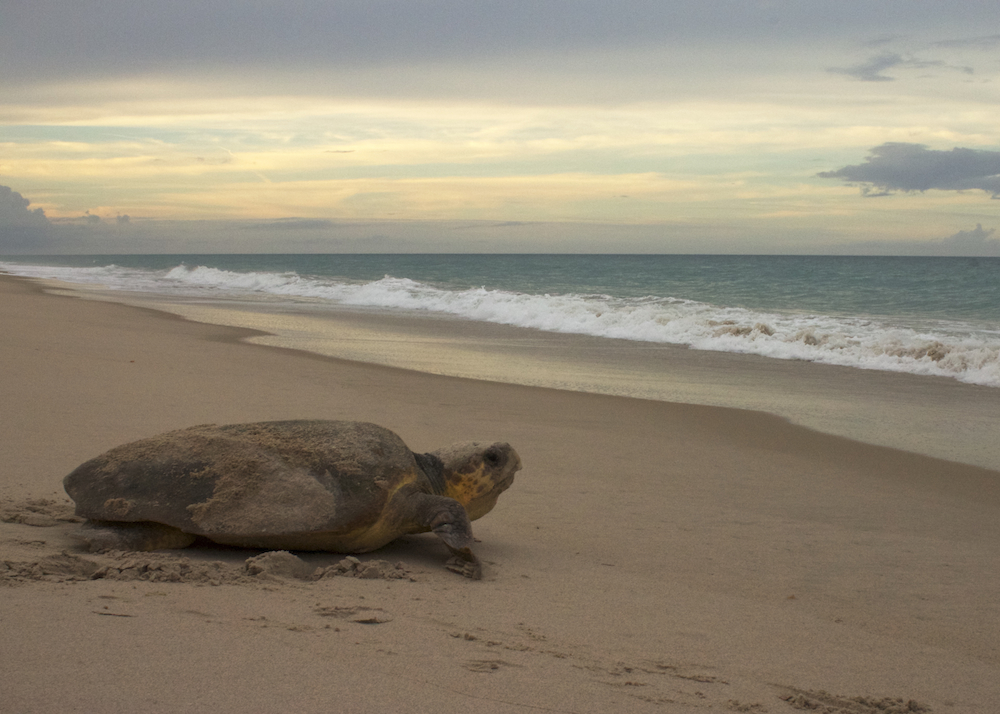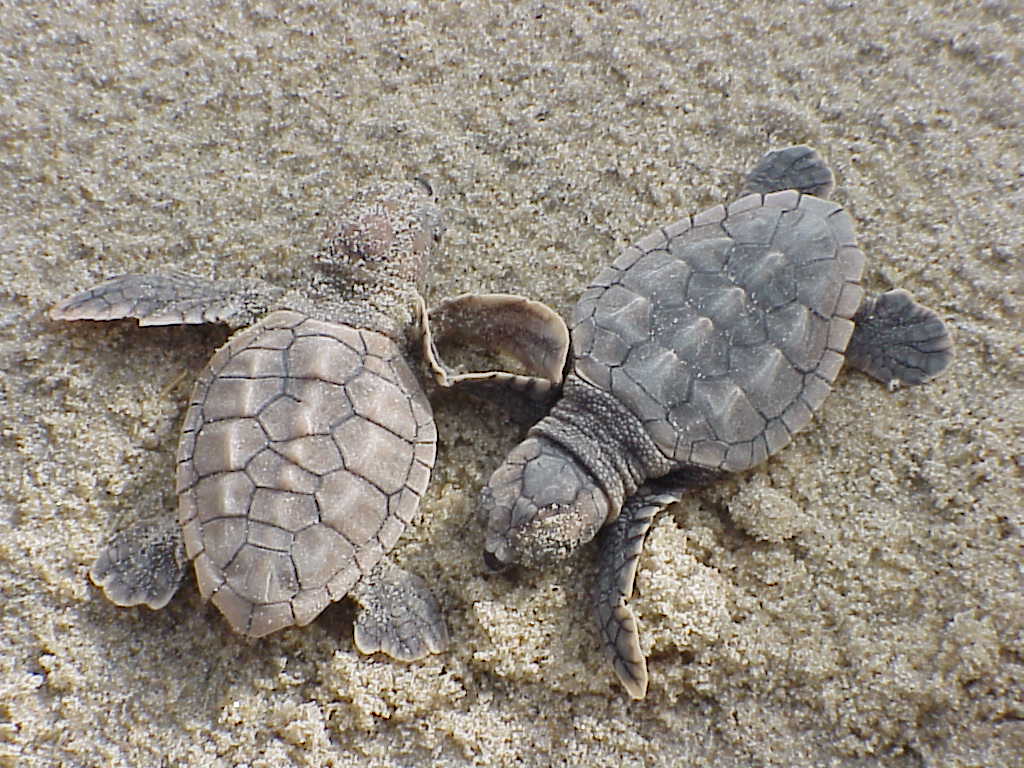Facts About Sea Turtles

Sea turtles, also called marine turtles, look like regular turtles, but have flippers instead of legs. They have been on Earth for more than 100 million years, according to the World Wildlife Federation (WWF). This makes them one of the oldest animal families on the planet.
Size
There are seven species of sea turtle and some are much larger than others. The largest sea turtle is the leatherback. It grows up to 7 feet (2 meters) long and weighs up to 2,000 lbs. (900 kilograms). The largest leatherback ever found was 8.5 feet (2.6 m) long and weighed 2,020 lbs. (916 kg), according to National Geographic.
The smallest sea turtle is the Kemp's Ridley turtle. It grows to about 2 feet (65 cm) long and weighs 100 lbs. (45 kg).
Habitat
Sea turtles live all over the world. The Kemp's Ridley turtle typically lives in the Gulf of Mexico, but can be found far north as Nova Scotia. Flatback sea turtles live in the ocean waters around Australia, while the leatherback species makes their home in every ocean on the planet. Green sea turtles and loggerhead sea turtles tend to stick to tropical and subtropical coastal waters. [Images: Loggerhead turtle swim to safety]

Diet
Sea turtles are carnivores, which means they eat meat, though their diet varies depending on species. They eat shrimp, seaweed, crabs, jellyfish, snails, sponges, algae and mollusks.
Habits
There isn't much known about the habits of sea turtles. Most sea turtles spend their lives alone until they mate. Some species, though, will rest and feed with others.
At mating time, females and males migrate to the beach where they were born, following the magnetic fields of the Earth as their guide. The migrations can be over 1,400 miles (2,253 kilometers) long.

Offspring
Sea turtles lay their eggs in bunches called a clutch. The temperatures of the sand determine the sex of the turtle. If the sand is below 85 degrees Fahrenheit (30 degrees Celsius), the eggs will turn out to be mostly male, but if the temperature is above 85 F (30 C) the eggs will mostly be female, according to the Defenders of Wildlife organization.
A clutch may have 70 to 190 eggs in it. The clutch is laid in a hole dug by the mother. Once the eggs are laid, she covers them with sand and goes back into the sea.
As soon as the eggs hatch, the babies start digging out of their hole. This process can take up to a week. Once free, the baby turtles hurry to the sea, and may never see their mother or father in their lifetimes, which can vary from 30 to 100 years, depending on the species.
Classification/taxonomy
This is the scientific classification of sea turtles according to the Integrated Taxonomic Information System (ITIS):
Kingdom: Animalia Subkingdom: Bilateria Infrakingdom: Deuterostomia Phylum: Chordata Subphylum: Vertebrata Infraphylum: Gnathostomata Superclass: Tetrapoda Class: Reptilia Order: Testudines Suborder: Cryptodira Superfamily: Chelonioidea Family: Cheloniidae Subfamilies: Carettinae, Cheloniinae Genera: Caretta (loggerhead sea turtles), Eretmochelys (Hawksbill sea turtles), Lepidochelys (Ridley sea turtles), Chelonia(green sea turtles),Natator (flatback turtles)
Conservation status
Sea turtles are categorized either as vulnerable or critically endangered by the International Union for Conservation of Nature's Red List. The Kemp’s Ridley sea turtle is listed as critically endangered, for example, while the leatherback sea turtle is listed as vulnerable.
According to the Defenders of Wildlife organization, oil spills, habit changes caused by artificial lighting, habitat loss due to coastal development, capture in commercial fisheries, getting entangled in marine debris, human poaching and beach driving are some of the biggest dangers to sea turtles.
Other facts
Sea turtles can stay under water for up to five hours.
The leatherback sea turtle has been recorded swimming as fast as 22 mph (35 km/h), according to the San Diego Zoo.
Loggerhead sea turtles drink salt water and excrete excess salt through glands by their eyes, which makes them look like they are crying.
Young flatback sea turtles sleep on the surface of the water.
Additional resources
Sign up for the Live Science daily newsletter now
Get the world’s most fascinating discoveries delivered straight to your inbox.











